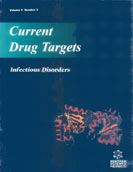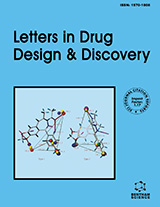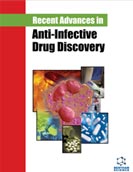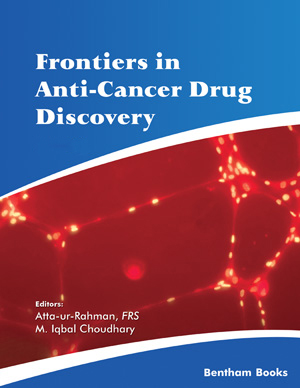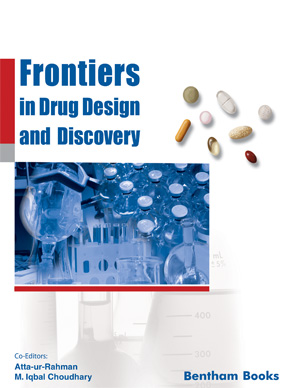Abstract
Cell migration is mediated by a group of chemotactic cytokines called chemokines: low molecular weight molecules that have been shown as important leukocyte chemical attractants to sites of inflammation and infection. Eotaxin-1, also called CCL11, was first described in 1994, as a highly specific eosino-phils chemokine. Many cell types including lymphocytes, macrophages, bronchial smooth muscle cells, endothelial cells and eosinophils, are able to produce this chemokine, predominantly after cytokine stimulation, however little is known about its expression in human skin in vivo. Eotaxin-1 also regulates the chemiotaxis and, in some conditions, activation of basophils, mast cells and T lymphocytes. Chemokine receptors are named from their ligand families, thus the CC chemokine eotaxin-1 binds to the CCR3 receptor which is expressed on eosinophis, mast cells, Th2 type lymphocytes and even on keratinocytes. It seems that eotaxin-1 is one of the most important cytokines involved in tissue inflammation playing a central role in the pathogenesis of allergic airway diseases (asthma and rhinitis), in inflammatory bowel disease and gastrointestinal allergic hypersensitivity and recently it has been proposed as a therapeutical target for these conditions. Our group has studied the role of eotaxin-1 in the pathogenesis of two skin conditions: dermatitis herpetiformis and AIDS-associated eosinophilic folliculitis, demonstrating that this chemokine, together with Th2 type cytokines (IL-13 and IL-4) is important in cell recruitment, inflammation and tissue damage; moreover eotaxin has proven to paly an important role in other skin conditions such as, bullous pemphigoid, pemphigoid gestationis, atopic dermatitis and allergic drug reactions Recent advances in the understanding of eotaxin-1-mediated mechanisms of chemotaxis in allergic and inflammatory conditions may predict that therapeutic antagonism is achievable. This paper will focus on the role that eotaxin and its receptor play in the pathogenetical mechanism in a number of dermatologic diseases, some of which, like atopic dermatitis, may benefit from the introduction of novel and more selective therapeutic options.
Keywords: Eotaxins, CCR3 Receptor, atopic dermatitis, Allergic Skin, therapeutic antagonism
Current Drug Targets - Inflammation & Allergy
Title: Eotaxins and CCR3 Receptor in Inflammatory and Allergic Skin Diseases: Therapeutical Implications
Volume: 2 Issue: 1
Author(s): Paolo Amerio, Alessandra Frezzolini, Claudio Feliciani, Roberto Verdolini, Patrizia Teofoli, Ornella De Pità and Pietro Puddu
Affiliation:
Keywords: Eotaxins, CCR3 Receptor, atopic dermatitis, Allergic Skin, therapeutic antagonism
Abstract: Cell migration is mediated by a group of chemotactic cytokines called chemokines: low molecular weight molecules that have been shown as important leukocyte chemical attractants to sites of inflammation and infection. Eotaxin-1, also called CCL11, was first described in 1994, as a highly specific eosino-phils chemokine. Many cell types including lymphocytes, macrophages, bronchial smooth muscle cells, endothelial cells and eosinophils, are able to produce this chemokine, predominantly after cytokine stimulation, however little is known about its expression in human skin in vivo. Eotaxin-1 also regulates the chemiotaxis and, in some conditions, activation of basophils, mast cells and T lymphocytes. Chemokine receptors are named from their ligand families, thus the CC chemokine eotaxin-1 binds to the CCR3 receptor which is expressed on eosinophis, mast cells, Th2 type lymphocytes and even on keratinocytes. It seems that eotaxin-1 is one of the most important cytokines involved in tissue inflammation playing a central role in the pathogenesis of allergic airway diseases (asthma and rhinitis), in inflammatory bowel disease and gastrointestinal allergic hypersensitivity and recently it has been proposed as a therapeutical target for these conditions. Our group has studied the role of eotaxin-1 in the pathogenesis of two skin conditions: dermatitis herpetiformis and AIDS-associated eosinophilic folliculitis, demonstrating that this chemokine, together with Th2 type cytokines (IL-13 and IL-4) is important in cell recruitment, inflammation and tissue damage; moreover eotaxin has proven to paly an important role in other skin conditions such as, bullous pemphigoid, pemphigoid gestationis, atopic dermatitis and allergic drug reactions Recent advances in the understanding of eotaxin-1-mediated mechanisms of chemotaxis in allergic and inflammatory conditions may predict that therapeutic antagonism is achievable. This paper will focus on the role that eotaxin and its receptor play in the pathogenetical mechanism in a number of dermatologic diseases, some of which, like atopic dermatitis, may benefit from the introduction of novel and more selective therapeutic options.
Export Options
About this article
Cite this article as:
Amerio Paolo, Frezzolini Alessandra, Feliciani Claudio, Verdolini Roberto, Teofoli Patrizia, Pità De Ornella and Puddu Pietro, Eotaxins and CCR3 Receptor in Inflammatory and Allergic Skin Diseases: Therapeutical Implications, Current Drug Targets - Inflammation & Allergy 2003; 2 (1) . https://dx.doi.org/10.2174/1568010033344480
| DOI https://dx.doi.org/10.2174/1568010033344480 |
Print ISSN 1568-010X |
| Publisher Name Bentham Science Publisher |
Online ISSN 1568-010X |
 62
62Related Articles
-
Second-Generation KATP Channel Openers
Mini-Reviews in Medicinal Chemistry Clinical Potential of VIP by Modified Pharmaco-kinetics and Delivery Mechanisms
Endocrine, Metabolic & Immune Disorders - Drug Targets Critical Review of Malondialdehyde Analysis in Biological Samples
Current Pharmaceutical Analysis Evaluation of HIV-1 Regulatory and Structural Proteins as Antigen Candidate in Mice and Humans
Current HIV Research Review: The JAK/STAT Protein Activation – Role in Cancer Development and Targeted Therapy
Current Signal Transduction Therapy Evaluation of Novel 7-(hetero)aryl-substituted Pyrazolo[1, 5-a]pyrimidines as Phosphodiesterase-4 Inhibitors
Letters in Drug Design & Discovery Alpinia calcarata Roscoe: A Rich Source of Phytopharmaceuticals in Sri Lanka
The Natural Products Journal Lagenaria siceraria: A Potential Source of Anti-Hyperlipidemic and Other Pharmacological Agents
Current Nutrition & Food Science Protein-based Strategies of Molecular Therapy in Allergy
Current Medicinal Chemistry - Anti-Inflammatory & Anti-Allergy Agents Effects of a Hypocaloric Diet on Obesity Biomarkers: Prevention of Low-Grade Inflammation since Childhood
Current Pharmaceutical Design Dysregulated Chemokine Signaling in Cystic Fibrosis Lung Disease: A Potential Therapeutic Target
Current Drug Targets Selenium Compounds Biotransformed by Mushrooms: Not Only Dietary Sources, But Also Toxicity Mediators
Current Nutrition & Food Science STABIL-study: The Course of Therapy, Safety and Pharmacokinetic Parameters of Conversion of Prograf® to Tacrolimus HEXAL®/Crilomus® in Renal Transplant Recipients – an Observational Study in Germany
Current Reviews in Clinical and Experimental Pharmacology Therapeutic and Protective Potential of Mesenchymal Stem Cells, Pharmaceutical Agents and Current Vaccines Against COVID-19
Current Stem Cell Research & Therapy Food Fortification with Omega-3 Fatty Acids; Microencapsulation as an Addition Method
Current Nutrition & Food Science Diagnostics and Therapy of Antineutrophil Cytoplasmic Antibody (ANCA) Associated Vasculitides
Current Pharmaceutical Design Circumventing Immune Tolerance Through Epigenetic Modification
Current Pharmaceutical Design Genetic Dissection of Complex Traits In Silico: Approaches, Problems and Solutions
Current Bioinformatics Xenobiotic and Non-Xenobiotic Interventions in the Microbiome Therapeutics
Current Drug Metabolism Exploring Cancer Therapeutics with Natural Products from African Medicinal Plants, Part I: Xanthones, Quinones, Steroids, Coumarins, Phenolics and other Classes of Compounds
Anti-Cancer Agents in Medicinal Chemistry


